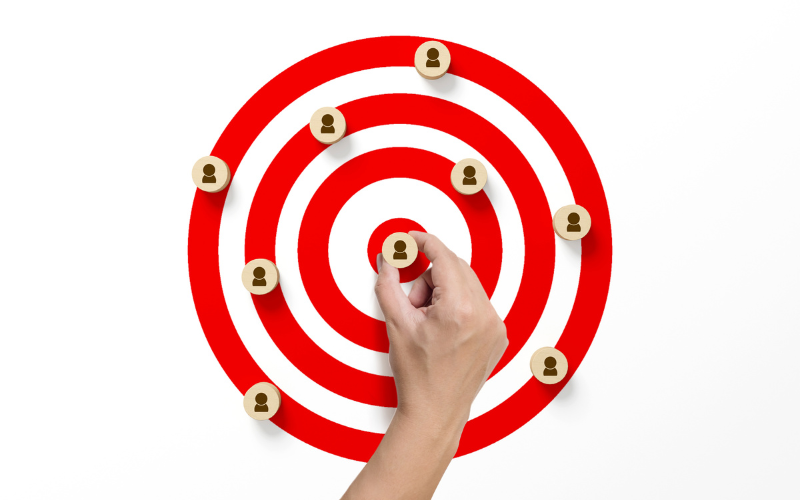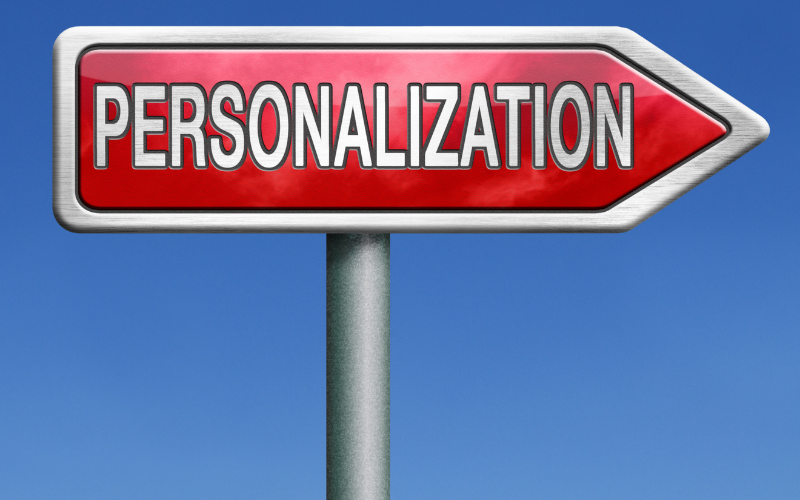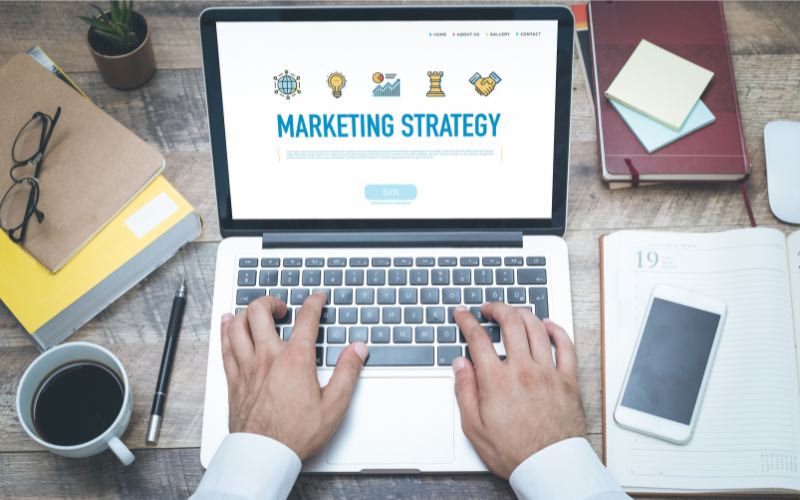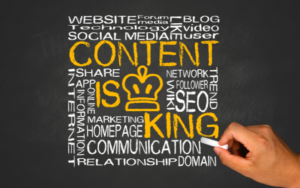Trigger marketing is a powerful strategy that can help businesses connect with their target audience and drive meaningful engagement. At its core, trigger marketing involves identifying and leveraging specific stimuli, or triggers, that prompt consumers to take action. In today’s digital age, where consumers are bombarded with marketing messages left and right, trigger marketing can help your brand cut through the noise and make a lasting impact.
In this article, we’ll explore the ins and outs of trigger marketing, including how to identify and leverage triggers in your marketing strategy, how to personalize your messaging and content using triggers, and how to measure the effectiveness of your trigger marketing efforts. We’ll also touch on the ethical considerations of using triggers in marketing and provide examples of successful trigger marketing campaigns.
Table of Contents
Understanding Triggers and Their Role in Marketing
Let’s start by understanding what triggers are and how they’re used in marketing. Triggers can be emotional, psychological, or behavioural, and they’re often tied to a specific memory, experience, or feeling. For example, the smell of freshly baked cookies may trigger a memory of your grandmother’s house, or the sound of a certain song may trigger a feeling of nostalgia.
In marketing, triggers are used to influence consumer behaviour and drive engagement. By identifying the triggers that resonate with your target audience, you can craft marketing messages and creative assets that speak directly to their needs, desires, and emotions.
Take, for example, Coca-Cola’s “Share a Coke” campaign. The brand identified the trigger of sharing and connection, and created personalized bottles with popular names on them. The campaign was wildly successful, with consumers sharing photos of their personalized bottles on social media and even creating their own ads featuring the brand.
Identifying and Leveraging Triggers in Your Marketing Strategy
Triggers are psychological buttons that marketers can press to get a specific response from their target audience. They are a powerful tool for creating persuasive marketing campaigns that can drive conversions and engagement. But before you can start using triggers effectively, you need to understand your target audience.

Understanding Your Target Audience
To identify the right triggers for your marketing campaigns, you need to have a deep understanding of your target audience. You need to know what motivates them, what they fear, what they desire, and what they value. This information can be gleaned through market research, customer surveys, social media listening, and other tools.
For example, if you’re targeting millennials, you might know that they value experiences over material possessions, they’re tech-savvy, and they’re concerned about social justice issues. Armed with this information, you can create marketing campaigns that speak directly to these values and motivations.
Brainstorming Triggers
So, how do you identify and leverage triggers in your marketing strategy? Start by thinking about your target audience and what motivates them. What are their pain points, interests, and values? What kind of language and imagery resonates with them?
Once you have a good understanding of your target audience, you can start brainstorming triggers that align with your brand and messaging. Consider using tools like Google Trends, social media listening, and customer surveys to help identify potential triggers.
Here are a few examples of triggers that brands have used successfully in their marketing campaigns:
- Nostalgia: Brands like Coca-Cola and Apple have used nostalgia to great effect in their marketing campaigns. By tapping into fond memories of the past, these brands have been able to create a sense of familiarity and comfort among their target audience.
- Fear: Fear is a powerful trigger that can be used to motivate people to take action. Brands like Nike and Under Armour have used fear to encourage their target audience to push themselves physically and achieve their fitness goals.
- Exclusivity: People want to feel like they’re part of an exclusive club, and brands like Louis Vuitton and Gucci have used this trigger to great effect. By creating a sense of exclusivity around their products, these brands have been able to create a sense of desire and status among their target audience.
- Urgency: Creating a sense of urgency can be a powerful way to motivate people to take action. Brands like Amazon and Booking.com have used urgency to encourage their target audience to make a purchase quickly, often using tactics like limited-time offers and countdown clocks.
- Social proof: People are more likely to do something if they see others doing it too. Brands like Airbnb and Uber have used social proof to great effect, showcasing the popularity of their services to build trust and credibility with their target audience.
- Scarcity: People place a higher value on things that are scarce. Brands like Supreme and limited-edition product releases have used scarcity to create a sense of exclusivity and drive demand for their products.
- Authority: People are more likely to do something if they see it as being endorsed by an authority figure. Brands like Nike and Coca-Cola have used celebrity endorsements to great effect, leveraging the authority and influence of famous athletes and celebrities to promote their products.
- Reciprocity: People are more likely to do something for you if you’ve done something for them first. Brands like Dropbox and Mailchimp have used reciprocity to great effect, offering free services or trials to their target audience in exchange for their contact information or other forms of engagement.
Leveraging Triggers in Your Marketing Strategy
Once you’ve identified the triggers that align with your brand and messaging, you can start leveraging them in your marketing strategy.
The Role of Personalization in Trigger Marketing

Personalization is a key component of trigger marketing. By personalizing your marketing messages and content, you can create a sense of relevance and connection with your target audience that will make your triggers even more effective.
Here are a few ways to personalize your trigger marketing campaigns:
- Use customer data: Use customer data to create personalized marketing messages and content that speak directly to your target audience’s needs and interests.
- Use segmentation: Segment your target audience based on demographics, behaviour, or other factors to create targeted marketing campaigns that will resonate more effectively with each group.
- Use dynamic content: Use dynamic content to create personalized marketing messages and content that change based on user behaviour, location, or other factors.
The Ethics of Trigger Marketing
While trigger marketing can be a powerful tool for driving engagement and conversions, it’s important to use it ethically. Here are a few things to keep in mind when using triggers in your marketing campaigns:
- Be transparent: Be transparent about what triggers you’re using and why. Don’t try to manipulate people into taking action without their knowledge or consent.
- Be respectful: Be respectful of people’s privacy and preferences. Don’t use triggers that are invasive or intrusive, and respect people’s right to opt out of your marketing campaigns.
- Be responsible: Be responsible with the triggers you use, and avoid using them in ways that could be harmful or offensive.
Measuring the Effectiveness of Trigger Marketing

Measuring the effectiveness of trigger marketing campaigns is critical to understanding what works and what doesn’t. Here are a few metrics you can use to measure the success of your trigger marketing efforts:
- Conversion rate: Measure the number of people who take the desired action after being exposed to your trigger marketing campaign.
- Engagement rate: Measure the number of people who engage with your marketing messages and content after being exposed to your triggers.
- Click-through rate: Measure the number of people who click through to your website or landing page after being exposed to your triggers.
By tracking these metrics and adjusting your trigger marketing campaigns accordingly, you can optimize your efforts and drive even better results over time.
In addition to these metrics, it’s also important to track the overall ROI of your trigger marketing campaigns. This will help you understand the financial impact of your campaigns and make informed decisions about where to allocate resources in the future.
To track ROI, you’ll need to establish a way to measure the revenue generated by your trigger marketing campaigns. This can be done through the use of unique promo codes, tracking URLs, or other methods that allow you to attribute revenue to specific campaigns.
Once you have a system in place for tracking ROI, you can use that data to optimize your trigger marketing campaigns and improve their effectiveness over time.
In conclusion, trigger marketing can be a powerful tool for businesses looking to drive engagement and conversions. By identifying and leveraging the triggers that resonate with your target audience, personalizing your marketing messages and content, and using triggers ethically, you can create marketing campaigns that truly resonate with your audience and drive meaningful results for your business.
Trigger Marketing Frequently Asked Questions
What is trigger marketing?
Trigger Marketing is a marketing strategy that involves delivering personalized, targeted messages to customers at specific points in their buyer journey. The goal is to engage customers in a way that feels timely, relevant, and contextual, and to ultimately drive conversions and revenue.
What are some examples of triggers that can be used in trigger marketing?
Some examples of triggers that can be used in trigger marketing include:
- Nostalgia
- Fear
- Exclusivity
- Urgency
- Personalization
- Social proof
- Scarcity
- Reciprocity
- Authority
- Likeability
- Anticipation
- Surprise
- Delight
How do I identify the triggers that will work best for my business?
To identify the triggers that will work best for your business, you’ll need to do some research and testing. Start by surveying your target audience to understand what motivates them and what types of messages and content they find most engaging. You can also test different triggers in your marketing campaigns and measure their effectiveness to see which ones work best.
How do I personalize my marketing messages and content using triggers?
To personalize your marketing messages and content using triggers, you’ll need to use data and segmentation to create targeted campaigns that speak directly to your audience’s needs and interests. This can be done through the use of customer data, behavioural data, and other forms of data that allow you to create detailed profiles of your target audience.
What are some best practices for using triggers in marketing?
Some best practices for using triggers in marketing include:
- Be transparent about what triggers you’re using and why
- Be respectful of people’s privacy and preferences
- Use triggers in a way that’s relevant and applicable to your audience
- Test and optimize your triggers to ensure they’re effective
- Use a combination of triggers to create more engaging campaigns
- Use triggers in a way that’s consistent with your brand’s tone and messaging
How do I measure the effectiveness of my trigger marketing campaigns?
To measure the effectiveness of your trigger marketing campaigns, you’ll need to track metrics such as conversion rate, engagement rate, and click-through rate. You can also track the overall ROI of your campaigns by measuring the revenue generated by each campaign and comparing it to the cost of the campaign.
What are some common mistakes to avoid when using triggers in marketing?
Some common mistakes to avoid when using triggers in marketing include:
- Using triggers that are irrelevant or not applicable to your audience
- Using triggers in a way that’s invasive or intrusive
- Using triggers that are too obvious or manipulative
- Not testing and optimizing your triggers to ensure they’re effective
- Using triggers in a way that’s inconsistent with your brand’s tone and messaging
By avoiding these mistakes and following best practices, you can create trigger marketing campaigns that truly resonate with your audience and drive meaningful results for your business.
What are some examples of trigger marketing campaigns?
Some examples of trigger marketing campaigns include:
- Abandoned cart emails: Triggered by a customer leaving items in their shopping cart, these emails remind customers of the products they left behind and encourage them to complete their purchase.
- Browse abandonment campaigns: These campaigns are designed to remind customers about products they viewed but did not purchase, and encourage them to return to the site and make a purchase.
- Welcome emails: Triggered by a customer signing up for a newsletter or making a purchase, these emails welcome customers to a brand’s community and provide them with information about products, services, and promotions.
- Birthday emails: Triggered by a customer’s birthday, these emails offer personalized discounts or promotions to celebrate the occasion and encourage customers to make a purchase.
- Cart abandonment Facebook ads: Triggered by a customer leaving items in their shopping cart, these Facebook ads remind customers of the products they left behind and encourage them to complete their purchase.
- Post-purchase emails: Triggered by a customer making a purchase, these emails thank customers for their purchase and provide them with information about related products, services, and promotions.
- Inactivity campaigns: These campaigns are designed to re-engage customers who have not interacted with the business in a while, and encourage them to return to the site and make a purchase.
What are some common trigger marketing metrics?
Some common trigger marketing metrics include:
- Conversion rate: The percentage of customers who complete a desired action, such as making a purchase or signing up for a newsletter.
- Engagement rate: The percentage of customers who interact with a marketing message, such as opening an email or clicking on a link.
- Click-through rate: The percentage of customers who click on a link in a marketing message, such as a link to a product page or a landing page.
- Revenue: The total amount of money generated by a trigger marketing campaign.
- Return on investment (ROI): The percentage of revenue generated by a trigger marketing campaign compared to the cost of the campaign.
How do I set up trigger marketing campaigns?
To set up trigger marketing campaigns, you’ll need to use a marketing automation platform or email marketing software that supports trigger marketing. Some popular options include Marketo, Pardot, and Mailchimp. Once you have the software in place, you can create trigger marketing campaigns using the best practices and advanced tactics mentioned earlier.
What are some trigger marketing tools and resources?
Some trigger marketing tools and resources include:
- Marketing automation platforms: Software that automates marketing processes, such as Marketo, Pardot, and Hubspot.
- Email marketing software: Software that allows you to create and send email campaigns, such as ActiveCampaign, Mailchimp, Constant Contact, and AWeber.
- Marketing automation tools: Tools that automate marketing processes, such as Marketo, Pardot, and Hubspot.
- Customer relationship management (CRM) software: Software that manages customer interactions, such as Salesforce, Zoho, and Freshsales.
- Social media management tools: Tools that allow you to manage social media accounts and campaigns, such as Hootsuite, Sprout Social, and Buffer.
- Analytics tools: Tools that allow you to track and analyze website traffic, email opens, and other marketing metrics, such as Google Analytics, Omniture, and Mixpanel.
- Content creation tools: Tools that allow you to create and edit content, such as Adobe Creative Suite, Canva, and WordPress.
- Project management tools: Tools that allow you to manage projects and collaborate with team members, such as Trello, Asana, and Basecamp.
- Customer feedback tools: Tools that allow you to collect and analyze customer feedback, such as SurveyMonkey, Typeform, and UserTesting.
- Personalization tools: Tools that allow you to personalize marketing messages and content, such as Optimizely, Adobe Target, and Sailthru.
- Predictive analytics tools: Tools that allow you to predict customer behaviour and tailor marketing campaigns accordingly, such as Adobe Campaign, Salesforce Einstein, and RapidMiner.
By leveraging these tools and resources, you can create and execute effective trigger marketing campaigns that drive engagement, conversions, and revenue for your business.




